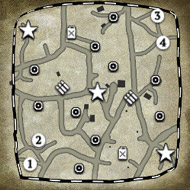Wars are won at the Strategic level. The allies and the soviets were on the ball on this one. However, other things points out to operational art at the tactical and operational levels- basically the W.Allied armies aren't aggressive, effective, or ambitious enough. Basically the West Front armies and airpower may have needed a different configuration and doctrine other than variations of 'methodical' battle. It would be an attempt to replicate blitzkrieg, although in West. Allied terms.
Part of your response I feel the need to speak on. The Allies and Soviets were not really "On the Ball". Let me explain:
Italy -> Allies continually lost much more resources because of the Germans ability to enact a defensive war on their terms. Allied solution? Land further up the coast. This achieved little success for months because the German ability to contain the landing zones. By wars end the Allies had yet to break out of Italy into southern Europe. While yes they lost the "WAR" the Germans had managed to stand firm within Italy against allies who were "On the Ball".
France -> Most initial Allied success was because of thier ability to war from the air. Without Air Power the war in France would have lasted significantly longer thus who knows what it would have looked like. The Air power was not due to Strategic Level but due to Resource Level and Technical Level. The P-51, Typhoon, Spitfires not only out numbered German Aircraft but they were replaceable and often had more technical advantages.
Russia -> Russia is a bit harder. Strategically Both sides were in the equal. The difference was that Russia had much more resources at thier dispolesl coupled with the fact that they had intel. Intel wins more wars than "Plans". Furthermore, German had good strategies through out the war but were hampered by military structure (Hitler in command etc.).
My point being: Wars are not won on the strategic level. Battles are won on the backs of the men whom fight it and the War is won on the backs of the home front whom continue to support and supply the needs of war. As Ike said "Plans are worthless, but planning is everything."












 ) =
) =






 cblanco ★
cblanco ★  보드카 중대
보드카 중대  VonManteuffel
VonManteuffel  Heartless Jäger
Heartless Jäger 